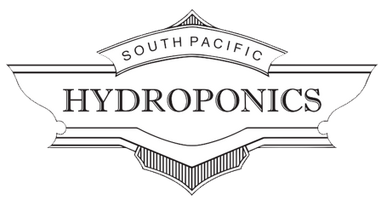*** Order Online Now for Home Delivery or Click & Collect... ***
Humic Compost
$5.91
Loyalty
Buy and earn $0.03 Loyalty for your next purchaseLoyalty is a discount program that lets you buy products and earn points to redeem on your next purchase. Your Loyalty balance is updated when you pay online or in-store. The Loyalty amount shown on this page can be recalculated at the checkout.
Size
Please choose
Save this product for later
Humic Compost
Product Details
Brand: High Powered Organics
The HIGH-PowR humic compost is not your average run-of-the-mill carbon source made from municipal waste, and industrial trash sold in landscape yards.
This quality carbon is made with closed-loop inputs for maximum consistency on pristine a certified organic farm, and aged for an extended period (up to a year).
If the regular compost is a Maccas cheeseburger, this is a high-end Wagyu steak for your soil.
The idea with HIGH-PowR is to add a clean, microbiologically diverse soil building block to your garden. It can be used when reamending (especially the 3rd cycle), added when top dressing, or used to make high-quality aerated microbial teas.
Whats in it?
HIGH-PowR is made from a diverse mix of composted organic inputs, including organically produced comfrey, field crops, woody plants, chicken bedding, cow manure, multiple types of organic straw, bio-char, and raw humates from Leonardite and Lignite. There is no greenwaste or external waste used
Incorporated when making the windrows is a suite of biodynamic preparations made locally, including Yarrow (502), Chamomile (503), Nettle (505), Oak Bark (506), Valerian (507). These preparations prime the compost for maximum output.
How's it made?
The first step is a full thermophilic composting where it is allowed to heat and pasteurise.
This part of the process is where HIGH-PowR begins to diverge from more commonly made composts. Whereas a Landscape yard compost may have been turned many many times over the coarse of a 6 week period, HIGH-PowR is only turned as much as absolutely needed to control heat levels. Instead difrferent microbe selections are added to facilitate breakdown instead of mechanical means. This is referred to as a "low-turn" system.
Whenever compost is turned, you evacuate CO2 along with heat into the atmosphere, the more it is turned the faster the compost breaks down, yes.....but the more carbon you lose in the process. A "low-turn" system like what is used for HIGH-PowR results in a different, more diverse microbe stockpile and a better end product.
The second phase is allowing the compost to sit, exposed to the health of the land for 3 seasons (and normally up to 4). This 9 to 12 month aging process results in a densely humified final product brimming with a complex range of microbes that have proven themselves the fittest of the bunch, over multiple seasons and temperature ranges.
Analysis:
Basic Measures:
pH (1:5 Water) 9.18
pH (1:5 0.01M CaCl2 ) 8.78
Electrical Conductivity EC µS/cm 3287
TOTAL SOLUBLE SALT TSS ppm 10847
Major Nutrients: TOTAL NITROGEN N kg/t 15.5 1.55 %
TOTAL PHOSPHORUS P kg/t 14.3 1.43 %
TOTAL POTASSIUM K kg/t 16.5 1.65 %
TOTAL SULPHUR S kg/t 6.4 0.637 %
Total Cations: TOTAL CALCIUM Ca % 7.83
TOTAL MAGNESIUM Mg % 0.87
TOTAL SODIUM Na % 0.527
Trace Minerals:
TOTAL COPPER Cu ppm 91.8
TOTAL ZINC Zn ppm 445
TOTAL IRON Fe ppm 12100
TOTAL MANGANESE Mn ppm 981
TOTAL COBALT Co ppm 3.88
TOTAL MOLYBDENUM Mo ppm 2.04
TOTAL BORON B ppm 35.7
Carbon Content:
TOTAL ORGANIC MATTER %
38.8 TOTAL ORGANIC CARBON % 19.4
CARBON NITROGEN RATIO C:N 12.5
MOISTURE CONTENT MC % 41.7
Display prices in:AUD

